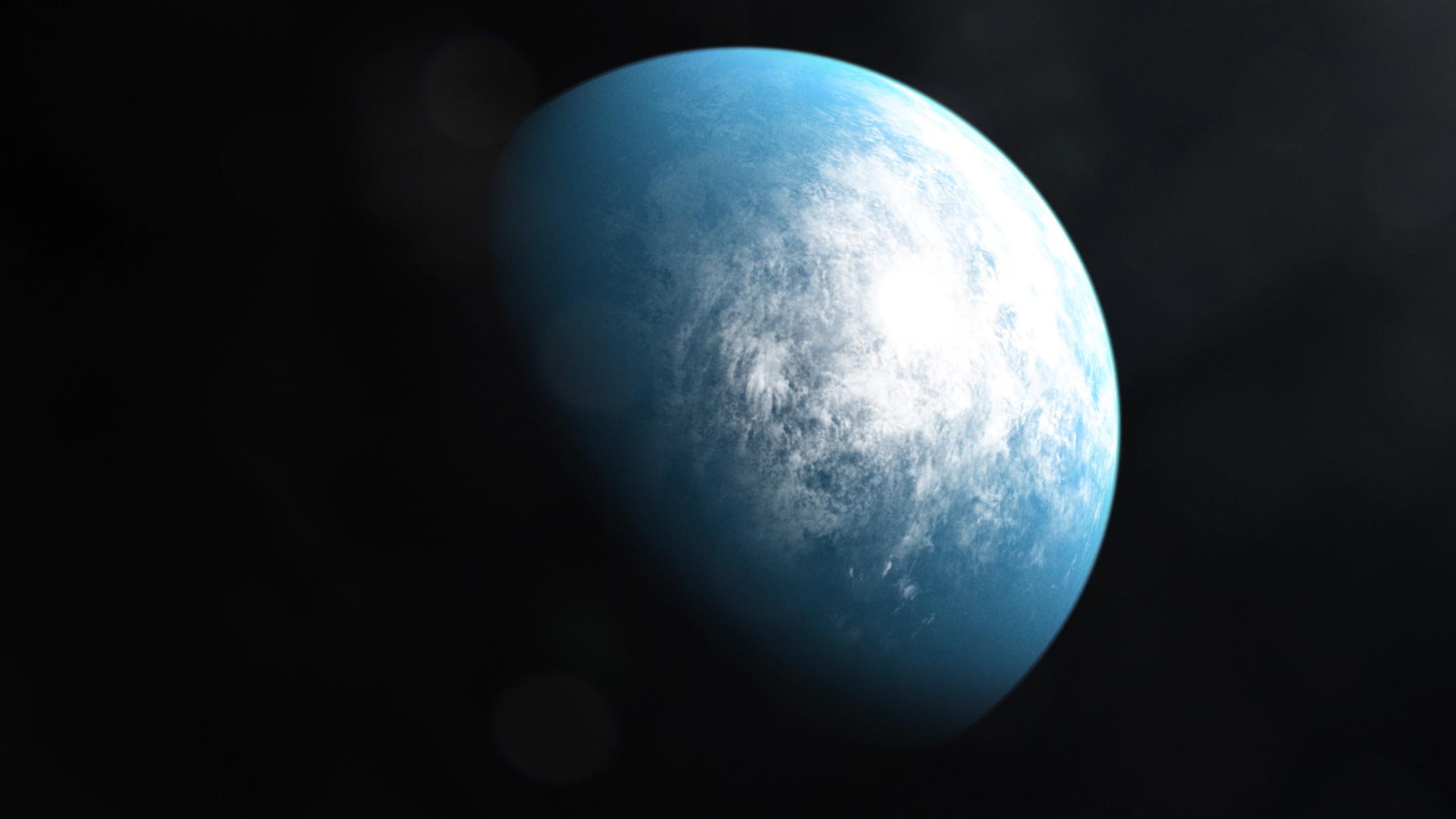Category: Exoplanets | Habitable Zone Worlds | Discovered by NASA’s TESS Mission
A Modest Star, a Remarkable Discovery
In early 2020, NASA’s Transiting Exoplanet Survey Satellite (TESS) quietly made history. Among thousands of worlds it was scanning, it found a small, rocky planet orbiting a dim red-dwarf star about 100 light-years away in the southern constellation Dorado.
That planet was TOI-700 d — a world roughly the size of Earth, bathed in gentle crimson light, and orbiting just far enough from its star for liquid water to possibly exist.
It didn’t make headlines for firestorms or diamond crusts. It stood out because of something far rarer: familiarity.
The Planetary Profile
- Name: TOI-700 d
- Type: Terrestrial (possibly rocky) exoplanet
- Distance from Earth: ~100 light-years
- Radius: ~1.19 × Earth
- Mass: ~1.7 × Earth (estimated)
- Star: TOI-700 — an M-type red dwarf
- Orbital period: 37.4 days
- Location: Constellation Dorado
- Discovery: 2020 by NASA’s TESS
The star TOI-700 (TESS Object of Interest 700) is about 40 % the Sun’s mass and shines at less than half a percent of our Sun’s brightness. For a planet to receive similar warmth to Earth, it must orbit much closer — and TOI-700 d does exactly that, circling its star at a distance just one-tenth that between Earth and the Sun.
Despite being so close, the weaker stellar energy means the planet sits neatly in what astronomers call the habitable zone — the region around a star where temperatures might allow liquid water on a planet’s surface.
A Tidal World
Most red-dwarf planets are tidally locked, meaning one side always faces the star while the other remains in eternal darkness — just as the Moon always shows the same face to Earth.
If TOI-700 d shares this trait, its dayside could bask in constant red daylight while its nightside freezes in perpetual shadow.
But between these extremes lies a possible refuge — the terminator zone, a twilight band where heat from the star and cold from the dark side balance out. Many scientists think this narrow ring could be the most comfortable place for life, if any exists there.
In this permanent sunset region, oceans could shimmer under a dim salmon-colored sky, and winds might sweep from the blistering day to the frozen night — redistributing warmth, shaping weather, and keeping the planet’s climate in motion.
Why It Matters
TOI-700 d isn’t just another exoplanet. It’s one of the first Earth-sized planets confirmed in a star’s habitable zone by TESS — a mission designed to find transiting planets by watching tiny dips in starlight.
Before its discovery, most potentially habitable worlds were detected by the Kepler Space Telescope, which focused on a single patch of sky. TESS, by contrast, scans almost the entire celestial sphere, giving scientists a wider and more complete view of nearby worlds.
That means TOI-700 d is not just a scientific find — it’s a prototype for what’s to come. A local, relatively calm, and observable target in our galactic neighborhood.
Unlike many red dwarfs that unleash violent stellar flares capable of stripping away planetary atmospheres, TOI-700’s star appears remarkably quiet. That increases the odds that TOI-700 d could maintain a stable atmosphere — a key ingredient for habitability.
The Models and the Mystery
Scientists have built multiple climate simulations to explore what TOI-700 d might look like.
Some imagine it as a cloudy water world, with deep oceans and thick, humid air. Others see a dry desert planet, reflecting light through a thin carbon-dioxide atmosphere.
Both models show that under the right conditions — enough greenhouse gases or cloud cover — surface temperatures could allow liquid water.
But so far, no telescope has directly measured its atmosphere.
Future missions like JWST (James Webb Space Telescope) and LUVOIR could change that. JWST might detect spectral fingerprints of molecules such as oxygen, carbon dioxide, or methane, revealing whether TOI-700 d’s air bears the signs of chemical balance — or even life.
The Family of Worlds
TOI-700 d doesn’t orbit alone. It’s part of a three-planet system:
- TOI-700 b: The innermost planet, about 1.05 times Earth’s size, orbits every 10 days — far too hot for life.
- TOI-700 c: A slightly larger, likely gaseous world, completes an orbit every 16 days.
- TOI-700 d: The outermost and coolest, basking in a steady 37-day orbit — the only one in the habitable zone.
In 2023, scientists even discovered TOI-700 e, another Earth-sized planet between c and d, further enriching the system’s intrigue.
This diversity makes TOI-700 an excellent miniature laboratory — a scaled-down version of our own solar system where astronomers can compare how planetary distance and atmosphere shape habitability.
Why It Captivates Us
TOI-700 d symbolizes the turning point in humanity’s search for “another Earth.”
It doesn’t promise alien jungles or oceans teeming with life. Instead, it whispers something subtler — that the cosmos may hold countless small, stable worlds quietly orbiting gentle stars, waiting to be seen.
In a universe that often feels vast and indifferent, finding one familiar-sized planet circling a calm red sun reminds us how possible it all is — that life, even fragile and rare, might not be confined to a single pale blue dot.
UTOPEDIA NOTES
“Some exoplanets roar with extremes — molten glass rain, diamond crusts, dying stars. TOI-700 d doesn’t. It simply resembles home. And in that simplicity lies its wonder.”


